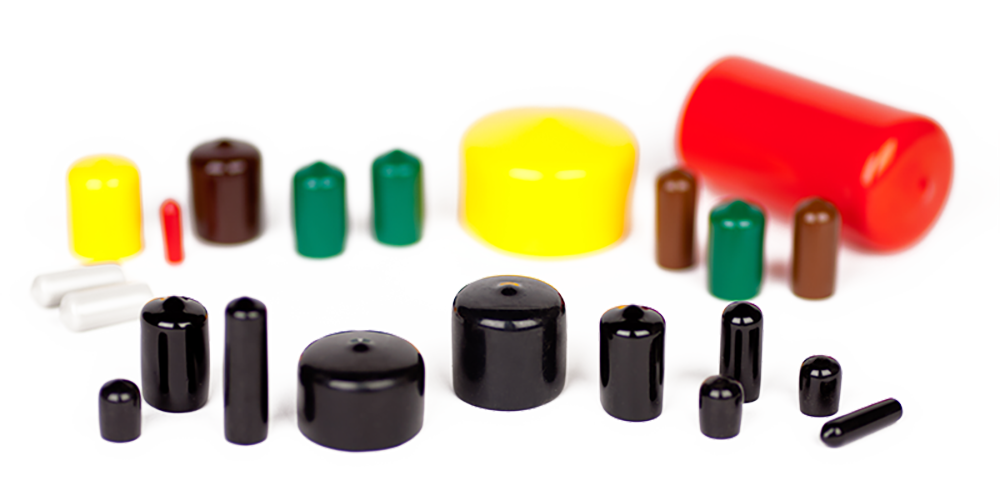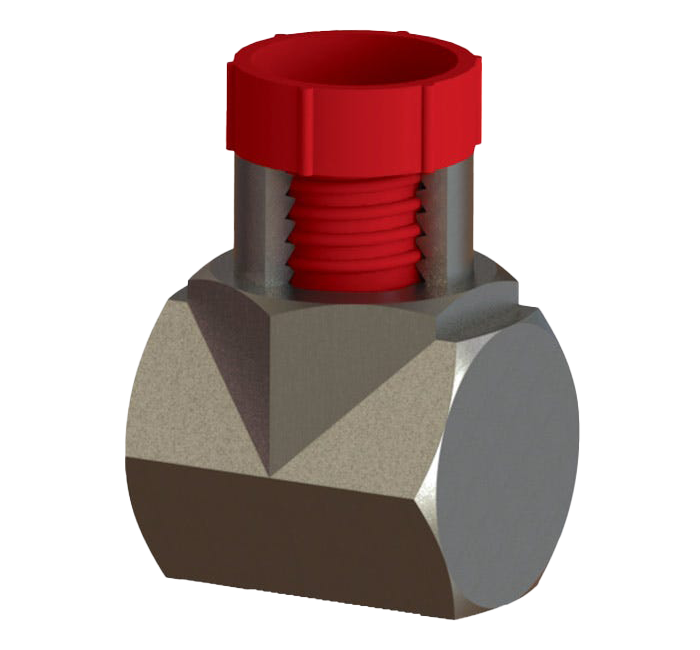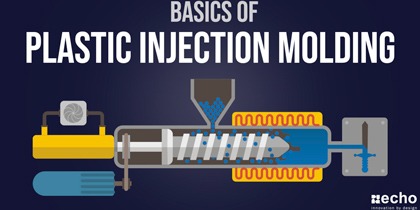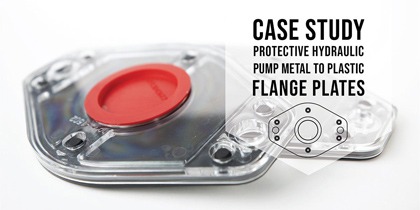Manufacturing Tips: How to Protect Threads and Critical Components
-

- Feb 9, 2021

Manufacturing Tips: Protecting Critical Components
Imagine having to install millions of plugs every single year. Just think about the repetitive motion, one plug at a time, over and over and over. It's not ideal, but it's especially a pain when you're using a cap or plug not engineered to your process.
Quality control plays a big role here. Unfortunately, when you're talking about hydraulic components, sensors, engine ports, and many other critical parts, you absolutely can't afford to risk having contamination. Luckily, protective products have come a long way, and in this post, we'll explore what to look for and how you could improve some of the most basic caps and plugs.
Automotive Fluid Routing Lines
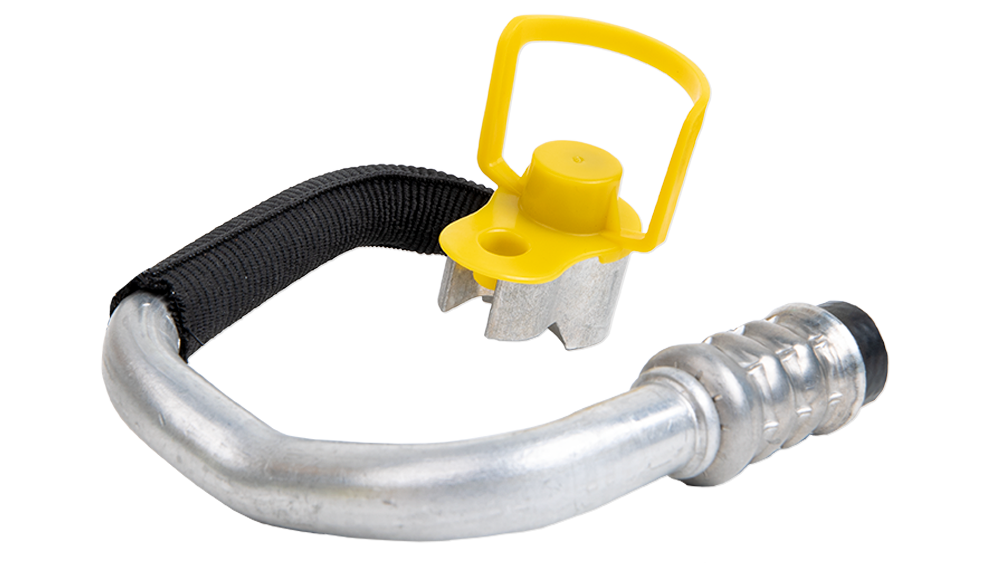

Engine Turbochargers
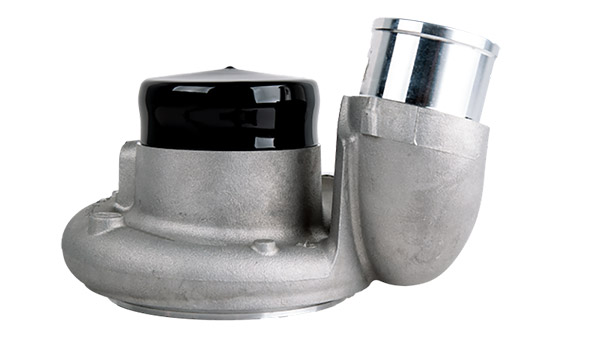

Hydraulic Hoses
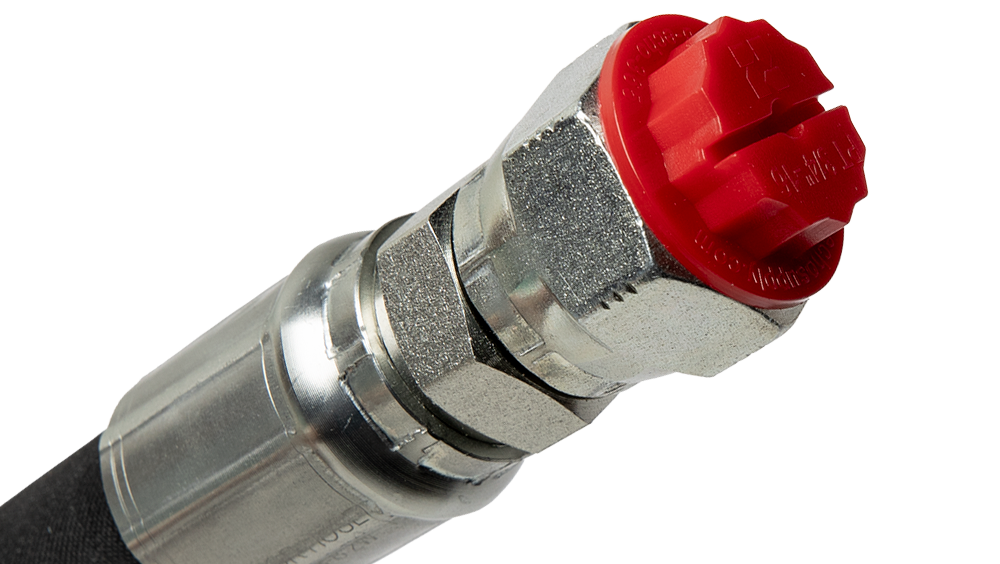

Design For Assembly
Imagine having to install millions of caps or plugs. Now imagine if every single one of them was just a little tricky to put on. This can be tricky when you're a manufacturing engineer trying to justify a new cap/plug and get final approval.
Designing for Assembly address two crucial areas in the manufacturing process:
- "How do we get these parts installed as fast and efficiently as possible?"
- "How do I ensure our line workers don't suffer any short-term or long-term injuries during the installation or removal process?"
If you've never worked on a high-production line, you probably didn't even consider "long-term" injuries as something to factor in. And by "long-term", we're usually talking about repetitive motion injury.
What is Repetitive Motion Injury?
According to Columbia University, repetitive motion injuries (also referred to as repetitive stress injury) are "temporary or permanent injuries to muscles, nerves, ligaments, and tendons caused by performing the same motion over and over again".
Reducing Risk of Repetitive Motion Injury
In relation to protective caps and plugs, reducing risks of repetitive motion injury generally comes down to making it easier to install and remove the parts. In order to achieve this, you'll want to work with your supplier to size and design your caps and plugs correctly. All too often we see manufacturers having to force on a cap or scratch at a plug to pull it out.
If you're looking to improve this, it's time to start getting into the numbers. Do you know what your insertion/extraction forces are?
Insertion / Extraction Force
The purpose of determining insertion and extraction force testing is to determine and measure the required force needed to install/remove the cap or plug. This will then help you determine what's acceptable vs. reject.
This will come down to designing and validating dimensional interference between the cap and mating surface.
Engineering elements when designing the ideal cap that will stay on during the shipment process, but will also play a role in installation/extraction forces may include:
- Undersizing in order to effectively grip and seal the component it is covering
- Adding a crush ring - This feature is sometimes used as a "sacrifice" feature during installation in order to better grip the part
- Air release/vents - If pressure plays a role, you'll sometimes find a need for adding a method of venting without allowing contaminants from entering in
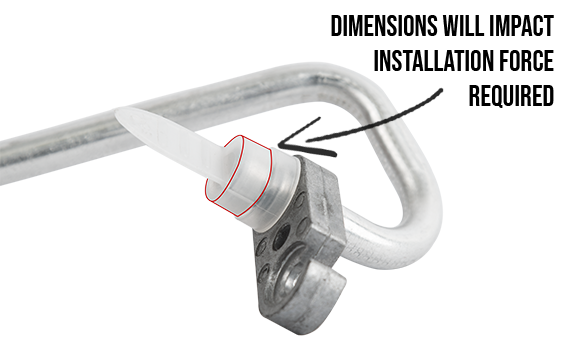

As a manufacturing engineer, you're looking to improve line efficiencies and minimize any risk of human errors happening. While this is fairly basic, it can still make a big impact.
Color coding and/or part embossing for location (Example: High vs. Low) are key to ensuring mistakes are not made, such as installing the wrong cap on the wrong component.
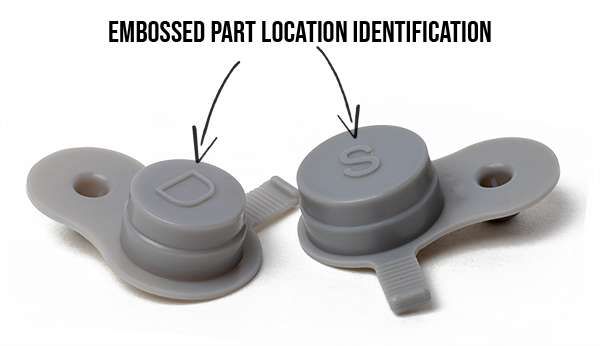

Part Identification
Installation is only half of the story. It's now time to think about Design for Disassembly. If this plays a crucial role, you're going to want to think about what method you'll want to use for removing the cap or plug. The primary methods are:
- Pull removal - Made easier when sizing is correct and pull handle is included
- Twist / unscrew removal - This will either involve unscrew by hand or via a tool (flathead/Phillips head/Torx/etc.)
- Tear removal - Not as common, as it's not the easiest method, but you'll typically see this way with battery post caps, oil pipes, and a few other applications
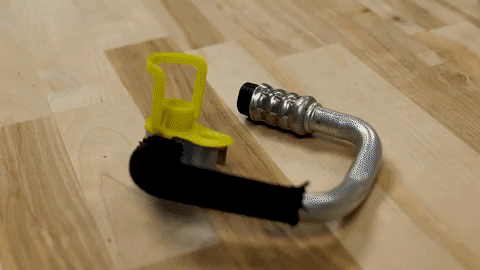

Extraction - Design for Easy Removal
Material Selection
Material selection is crucial for determining what route you're gonna want to take for protecting the critical components. To keep it simple, we've broken the decision making down to 4 core primary decision points during your ideation and justification stages:
- Pricing: Like any additional sourced product, pricing will play a huge factor towards approval and final purchase order being placed
- Ease of Installation/Removal: This is crucial when you're looking into large quantity part requests
- Chemical Resistance: When it comes to chemicals and hydraulic fluids, you'll need to make sure the caps/plugs you choose won't break down
- Temperature Resistance: This will typically come into play if you're also choosing to use the cap or plug during your finishing process
LDPE
One of the most common materials you're going to see used for plastic shipping caps and plugs is LDPE. Common automotive and fluid power applications LDPE is used include custom shipping caps for fluid routing lines, tapered plugs for valves, tubes, pipes, and tanks, netting, engine control module caps, and dust caps (also referred to as shower caps) for engine ports.
|
Pros:
|
Cons:
|
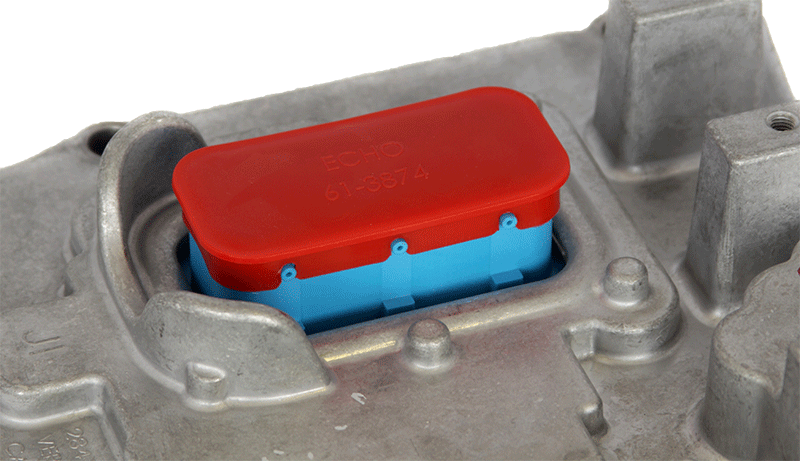

HDPE is significantly stronger and less flexible than LDPE, which is why it is typically the material of choice for threaded plug options.
|
Pros:
|
Cons:
|
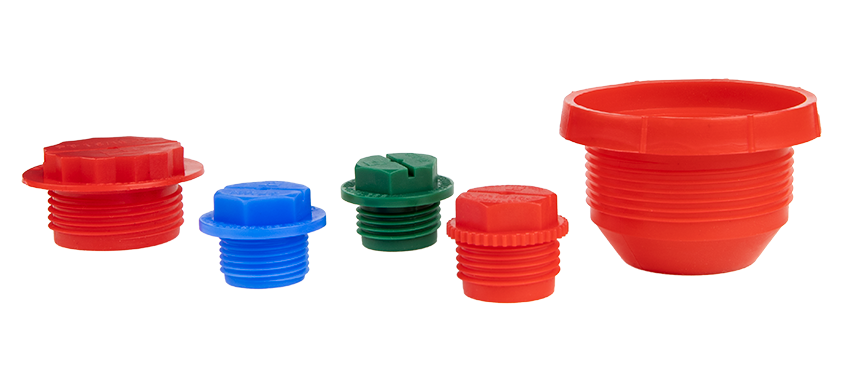

HDPE
Nylon
Nylon makes for an excellent material used for threaded plugs and can also make a great alternative for when the temperature comes into play. Nylon is higher precision material when it comes to molding.
|
Pros:
|
Cons:
|
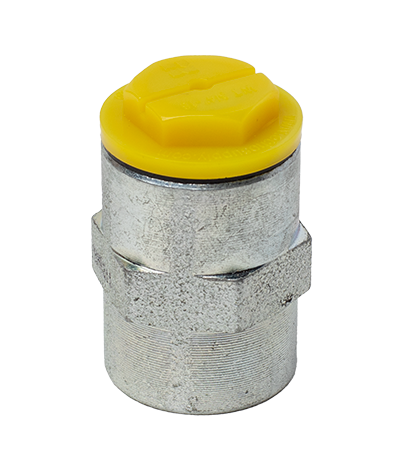

Vinyl is a flexible material that is commonly used as a protective or decorative cap. Compared to most hard plastic caps, vinyl caps provide better sealing and won’t leave any residue on threads during removal. Vinyl is designed to be easy to install, yet create an airtight seal that prevents them from falling off once they’re on.
|
Pros:
|
Cons:
|
Vinyl
Protecting Threaded Holes, Ports, and Fittings
When it comes to plastic plugs used to mask threaded holes, ports, and fittings, you actually have a variety of different options to choose from
LDPE Tapered Plugs
Theses tapered plugs are some of the most common protection solutions you'll find as the tapered design allows them to plug a range of different hole sizes, and they're also able to be used as a cap. They are also flexible due to the LDPE material, giving them the ability to better conform and produce a better seal.
For high-production lines, we recommend using the versions that have a center-pull handle or side-pull handle.
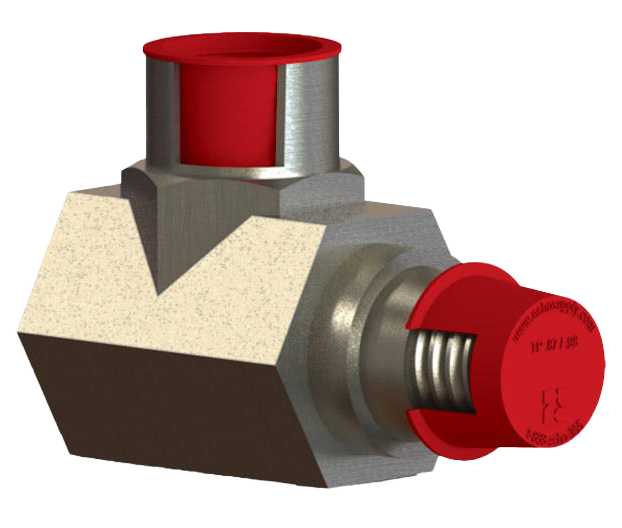

Threaded plugs are an excellent way of ensuring that your threads are protected. They also almost eliminate any risk of the plugs falling out during transport.
Typically, you'll find specific protective plugs based on thread type (JIC, SAE, Metric), and then you'll want to determine what installation/removal method you want your line to go with. Whether it's by hand tightening/unscrewing or by using a tool, you may want to work with your lineworkers to determine their preference.
HDPE Threaded Plugs
Vinyl Caps
Vinyl caps are a really popular option for manufacturers as they're flexible, yet durable, and more asthetically pleasing than some of the other options. Vinyl caps are a great way of protecting and sealing exposed bolts and capping off critical ports.
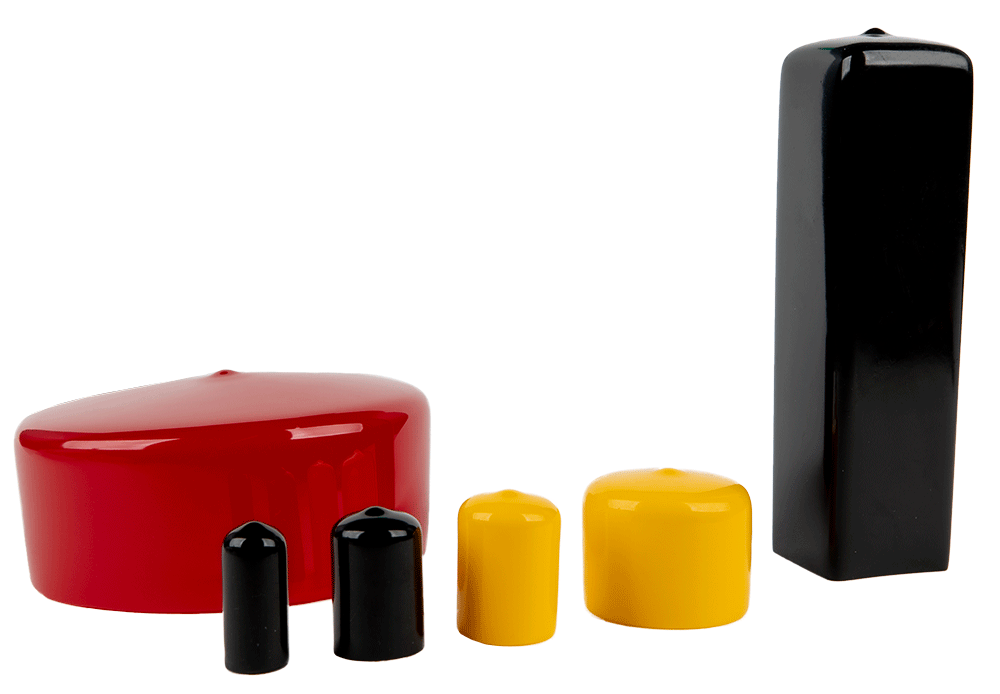

Shower Caps / Dust Covers
Another favorite because of its ease of use and ability to cover irregular shapes is shower caps. These are low cost and can be used to cover inlet/outlet ports on engines, driveline components, and much more. A few tips for improving your line's use of these products include:
- Color-coding the bands to easily determine sizes
- Thickening film for better protection
- Going with VCI (Vapor Corrosion Inhibitor) options when rust is an issue for your component
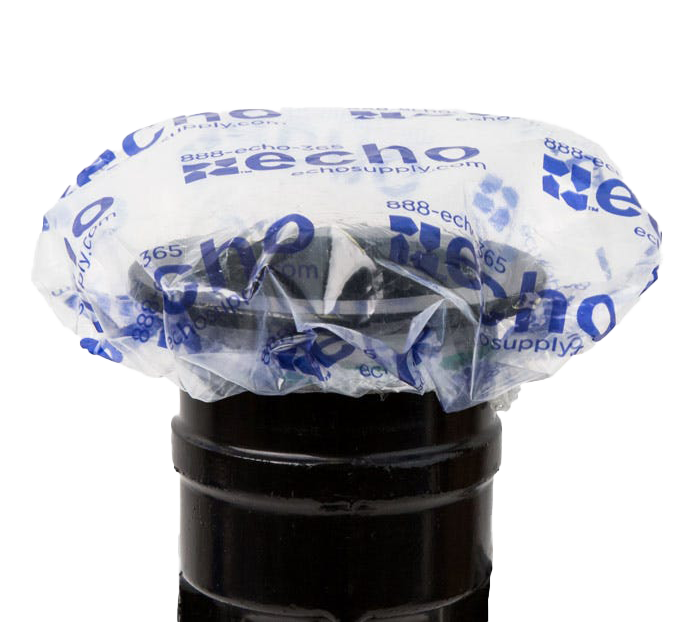

Improved Sealing: Adding a Rubber Seal/Gasket
When you're using a protective cap or plug that also needs to prevent liquids from exiting or you simply want additional protection from exterior contaminants, adding a rubber seal is the ideal option.
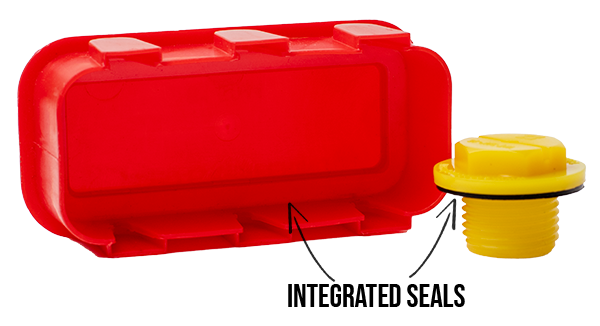

Conclusion
Optimizing a protective cap or plug can mean the world to the ones who are in charge of installing and removing them. While this is probably one of the last parts of the production line you want to think of, additional engineering can make a huge impact.
So, if you're a manufacturing engineer looking to improve product protection, here is what you need to do:
- Look at your current process: If you're needing a new cap/plug or you're looking to improve your current part, look for your core issues. Are your line workers complaining or getting injured? Are the caps popping off? Are you having issues keeping parts separated?
- Once you've identified your core issue, brainstorm potential solutions. Example: Your line walkers are spending excessive time figuring out which cap is which because of their similar size and shape. What if we were to make one blue and one red?
- Take your concepts and team up with your supplier. Work with their engineers to determine project feasibility and see what their experience is for potential improvements
- Once you approve of the idea, do a cost analysis breakdown to take to your purchasing team. How much time will it save your line workers with installation/removal? Will you decrease your quality reject rate? Or will the new parts be lower cost than what you currently use?
- Once you kick the project off with prototypes, see if your supplier is able to test insertion/extraction forces. Look to see if it hits your criteria or if modifications need to be made before full production
If you're looking to improve your current operations or have a new project getting ready to launch, reach out to our team below to discuss how to go about your protective components.



